Switching to Vaping: A Complete Guide for Adult Smokers
Every smoker’s journey is different. Whether you want to quit completely or reduce cigarette use, understanding your options can help you make an informed choice. Many people explore nicotine alternatives, such as vaping, to find what works best for them.
Vaping can help some adults reduce or stop smoking, but success depends on your approach and support. This guide explains what vaping is, how it differs from smoking, and how you can use it as a tool for safe and effective switching.
Contents:
- Vaping Basics: What Switchers Need to Know
- Switching to Vaping: Benefits, Challenges & Safe Steps
- Which Vape is Best for Adult Smokers?
- How to Switch Successfully
- Next Steps & FAQs
1. Vaping Basics: What Switchers Need to Know
Vaping is the process of inhaling a vapour produced by a device that heats a liquid called E-liquid. E-liquids can contain nicotine in varying strengths and a wide range of flavours.
Is Vaping Harmful?
No nicotine product is completely risk-free, but vaping is far less harmful than smoking because it doesn’t involve burning tobacco, the main source of tar and toxic chemicals.
“The current best estimate is that e-cigarettes are around 95% less harmful than smoking.” – Public Health England.
Common Vaping Myths
| Myth | Fact |
|---|---|
| Vaping is as harmful as smoking | Not true. Vaping is far less harmful. Cigarettes release thousands of toxic chemicals that vaping avoids. |
| Nicotine is very harmful | Nicotine is addictive but doesn’t cause cancer, lung disease, or heart disease; the main harm comes from smoking. |
| Vaping doesn’t help you quit | Vapes can be more effective than patches or gum when used properly. |
| Switching to a vape is just swapping addictions | Vaping delivers nicotine without tobacco toxins. Addiction may continue, but the risk is far lower. |
| People vape more than they smoked, so it’s worse | Frequent puffs are normal and carry only a fraction of a cigarette’s risk. |
| Vapes are unregulated | All UK vapes must be MHRA-registered and meet strict safety standards. |
| Vaping causes “popcorn lung” | Diacetyl is banned in UK vapes. No evidence links vaping to this disease. |
| Vape aerosol harms those around you | No proof of harm from secondhand vapour. Still, avoid vaping near babies, children, or those with asthma. |
Source: NHS: Vaping Myths
What is a Vape?
A vape consists of several basic parts:
- Battery: Powers the device and heats the coil. It can be built-in or removable.
- Coil: The heating element that turns E-Liquid into vapour.
- E-Liquid: The liquid that is vaporised. Contains nicotine (optional), flavourings, and base liquids (PG/VG).
- Tank/Pod: Holds the E-Liquid. Some are refillable, others come prefilled.
- Mouthpiece: The part you inhale from.
- Optional features: Some devices have airflow and power controls, screens, buttons and locks.

Guide – What is VG/PG? E-Liquid Ratio Guide
Vape Device Types
Vape devices come in various styles to suit both beginners and experienced users. While there are multiple types within each category, they can generally be grouped into three main types for simplicity and easy comparison.
1. Pod Systems
Compact and user-friendly, pod systems use replaceable pods. Closed pods come prefilled and ready to use, while refillable pods let you add your own E-Liquid, nicotine strength, and flavour. They’re popular for adult smokers switching from cigarettes because they combine convenience with control.
2. Mods and Sub-Ohm Devices
Larger, more advanced devices let users adjust power, airflow, and sometimes temperature for a customisable experience. Sub-ohm devices, designed for lower-resistance coils, produce bigger clouds and more intense flavour. They suit experienced vapers or adult smokers seeking an experience that doesn't mimic the inhale of a cigarette.
3. Disposables
Previously popular for beginners due to their simplicity, disposables are now banned in the UK. Adult switchers should use pod systems or refillable/mod devices instead. Avoid unregulated disposables, which may pose safety risks, and report sellers to your local Trading Standards office.
You can authenticate IVG products by using the scratch and reveal stickers.
2. Switching to Vaping: Benefits, Challenges & Safe Steps
Understanding the benefits, potential challenges, and what to expect can help you make the transition to vaping smoother and more successful.
Pros and Cons: Smoking vs Vaping
| Factor | Vaping | Smoking |
|---|---|---|
| Harmful chemicals | Fewer than cigarettes | Many toxic and cancer-causing chemicals |
| Odour | Minimal | Lingering smoke smell |
| Cost | Often lower ongoing cost | High ongoing cost |
| Addiction | Nicotine is addictive; strengths can be lowered | Nicotine is addictive |
| Adjustment | Short adjustment period | Habitual and reinforcing |
| Health risk | Reduced compared to smoking | Significant risk to health |
Potential Benefits & Goals of Switching
Switching from cigarettes to vaping can improve your health, finances, and lifestyle while helping you take control of your nicotine use.
- Health: Reduced exposure to harmful chemicals; lower risk of heart disease, stroke, and respiratory conditions.
- Well-being: Manage nicotine cravings without the toxins from tobacco smoke.
- Family: Lower secondhand smoke exposure for family members.
- Lifestyle & Social Life: Vape discreetly with minimal odour; enjoy smoke-free environments.
- Personal Achievement: Gain confidence, independence, and control over your choices.
- Finances: Spend less than you would on cigarettes.
Cost Savings: How Switching to Vaping Can Help Your Wallet
Switching from smoking to vaping can save you money while reducing harm. See the comparison below.
Moderate Vaper vs Moderate Smoker
| Timeframe | Vaping Cost (1 Pod*/Week) | Cigarettes Cost (10/day) | Savings |
|---|---|---|---|
| Per Day | £1.14 | £9.00 | £7.86 |
| Per Week | £7.95 | £63.00 | £55.05 |
| Per Month | £34.45 | £270.00 | £235.55 |
| Per Year | £413.40 | £3,285.00 | £2,871.60 |
*Based on IVG PRO 12 10,000 puff pod.
Simple Switching Goal
Setting clear, time-based goals helps track progress and build confidence.
Common Challenges Smokers Face When Switching
Switching from cigarettes to vaping can be straightforward, but many adult smokers encounter some hurdles:
- Device confusion: start simple, follow instructions or tutorials.
- Unsatisfied cravings: match nicotine strength to your cigarette use (heavy smokers should go with higher mg/ml nicotine – up to 20mg/ml).
- Missing the cigarette feel: try MTL (mouth-to-lung) vapes or pair vaping with smoking routines.
- Withdrawal effects: irritability, restlessness, appetite changes peak early; stay hydrated, rest, and use coping strategies.
Taking Safe Action
- Prioritise safety: Your well-being comes first when switching from smoking.
- Get professional advice: Speak to a healthcare professional for personalised guidance.
- Seek support: Friends, family, or support groups can help keep you on track.
- Combine approaches safely: Consider using other nicotine alternatives alongside vaping if needed.
- Use devices safely: Start with manageable, regulated devices, and the right nicotine strength and flavours.
Risks and Precautions
Vaping is much safer than smoking, but it’s not risk-free. Mild throat irritation, dry mouth, or coughing may occur initially, typically resolving quickly. Stop using your vape if discomfort persists and consult a healthcare professional.
When to Seek Help
If you continue smoking alongside vaping or still experience strong cravings after a few weeks, seek tailored support from your local Stop Smoking Service or GP.
“You will not get the full benefit from vaping unless you stop smoking cigarettes completely. Getting expert help from your local Stop Smoking Service gives you the best chance of quitting smoking for good.” – Using E-Cigarettes to Stop Smoking, NHS.
3. Which Vape is Best for Adult Smokers?
Choosing the Right Device

Different devices suit different needs, and picking the right one can make switching smoother, help manage cravings, and make vaping more enjoyable:
- Ease of Use: Beginners may prefer “click and vape” devices; advanced users can handle adjustable settings.
- Nicotine Options: Choose a strength that satisfies cravings (0–20mg/ml in the UK).
- Flavours: Refillable devices let you explore many flavours; prefilled pods are more limited but often have 20-30 flavours to explore.
- Maintenance: Less upkeep makes switching easier for new vapers.
- Size/Portability: Smaller devices are easy to carry; larger ones may offer more power or battery life.
- Experience Level: Match the device to your comfort and experience.
- Vaping Style: MTL (mouth-to-lung) mimics a cigarette draw; DTL (direct-to-lung) gives bigger clouds and stronger flavour.
- Cost: Consider both upfront price and ongoing e-liquid/pod costs to keep vaping sustainable.
Guide: MTL vs DTL Vaping: Which One is Right for You?
Comparison: What Vape Type is Best for Switching Smokers?
Different vapes suit different users. This table shows ease of use, nicotine options, flavour flexibility, upkeep, size, best user type, vaping style, and typical cost for each vape type.
| Type of Vape | How Easy It Is to Use | Nicotine Options | Flavour Choice | Upkeep Needed | Size | Best For | Vaping Style | Cost |
|---|---|---|---|---|---|---|---|---|
| Prefilled Pod (Closed) | Click in and vape | Fixed at 0, 10 or 20mg | Limited to the pod range | None | Small–Medium | Beginners | MTL – similar to cigarette draw | Low |
| Refillable Pod (Open) | Easy – fill with liquid | Flexible, 0–20mg | Any E-Liquid you choose | Low | Small–Medium | Beginners–Intermediate | MTL → light DTL (depends on coil/airflow) | Medium |
| Advanced Refillable (Mods / Sub-Ohm) | Some setup needed | Flexible, 0–20mg | Any E-Liquid you choose | Higher | Small–Large | Experienced | MTL → DTL (depends on coil/airflow) | Medium–High |
Nicotine Guide
Use this as a guide to choose the right nicotine strength based on how many cigarettes you currently smoke per day. Adjust as needed when switching to vaping.
| Cigarettes per day | Suggested Vape Nicotine Strength (mg/ml) |
|---|---|
| 1–5 | 5–10 |
| 6–15 | 10–15 |
| 16+ | 18–20 |
Nicotine content can be shown as mg/ml or as a percentage. For example, 10mg/ml = 1% nicotine. Understanding this helps you choose the right strength and track your intake accurately.
Nicotine Types: Salt vs Freebase
- Nicotine salts absorb faster and feel smoother at higher strengths (often used in prefilled pods).
- Freebase nicotine gives a stronger throat hit and works best in lower strengths or sub-ohm devices.
Choosing the right type depends on your cravings and preferred vaping style.

Tips for Getting Started
Make your switch from cigarettes smooth and stress-free:
- Keep it simple: Pick an easy-to-use, low-maintenance device so you can focus on quitting.
- Try flavours: Explore options that you enjoy and that don’t remind you of smoking.
- Choose the right nicotine: Start with a strength that satisfies cravings and adjust as needed.
- Be patient: Switching takes time. Expect a short adjustment period as you get used to your device and routine.
4. How to Switch Successfully
Take Simple Steps

Switching from cigarettes to vaping is a personal journey. Keep it simple and focus on simple steps:
- Set a goal: Decide whether you’ll reduce gradually or switch completely.
- Choose the right vape: Pick a reliable, user-friendly device, select a nicotine strength that satisfies cravings, and explore flavours you enjoy.
- Create a routine and track progress: Replace cigarette breaks with vaping moments, log your reduction, satisfaction, and challenges, and lean on healthcare professionals, Stop Smoking Services, or friends for guidance.
- Reward milestones: Celebrate smoke-free days or weeks to stay motivated.
Suggested Timeline for Switching
| Time | What to Expect | Notes/Tips |
|---|---|---|
| Days 1–3 | Strong cravings, mood swings, irritability | Keep a simple log of cravings and satisfaction. Use a nicotine strength that matches your smoking level. |
| Days 4–7 | Reduced cigarette intake, experimenting with flavours | Focus on habit replacement, pair vaping with daily routines. Adjust nicotine if needed. |
| Week 2 | Cigarettes become less satisfying, and vaping starts to feel normal | Small setbacks are common; don’t be discouraged. Track milestones and reward progress. |
| Week 3–4 | Cravings decrease further, and vaping feels more habitual | Keep observing what works and what doesn’t. If you slip, restart the timeline without guilt. |
| Month 1+ | Many smokers reduce significantly or switch completely | Keep rewarding yourself and adjust nicotine gradually if needed. |
Choosing a Trustworthy Vaping Brand

When switching from cigarettes, choosing a reputable vaping brand is important for safety, quality, and consistent nicotine delivery. Here’s what to look for:
- MHRA Registered: Only use products registered with the Medicines and Healthcare products Regulatory Agency to ensure safety and quality.
- TPD/TRPR Compliant: Check that products meet UK legal requirements, including nicotine limits and child-resistant packaging.
- Avoid Black-Market Products: Stick to official retailers; unregulated vapes can be unsafe or mislabelled.
- Check Reviews: Look for feedback from specialist shops, forums, or independent sources.
- Ingredient Transparency: Choose brands that list clear E-Liquid contents, including nicotine strength and base liquids.
- Professional & Peer Recommendations: Seek brands endorsed by healthcare professionals, stop-smoking services, or trusted friends/family.
- Customer Support: Choose brands that provide guidance, troubleshooting help, and responsive service.
Switching from cigarettes to vaping can be a positive step towards reducing harm and gaining more control over your nicotine use.
Start small, choose products you trust, track your progress, and reward yourself along the way. With patience and the right support, you can make the transition safer, simpler, and more sustainable.
5. Next Steps & FAQs
Explore IVG beginner-friendly vape kits
Guide: Which IVG Vape Offers the Best Value for Money?
Frequently Asked Questions
Q: What happens when you go from smoking to vaping?
A: Within hours, carbon monoxide levels in your blood drop. Over days and months, lung function improves as your lungs begin to clear mucus. Vaping doesn't burn tobacco, reducing exposure to harmful chemicals.
Q: Do lungs heal when you switch from smoking to vaping?
A: Yes, lung function can improve by up to 10% within months. Symptoms like coughing or wheezing often decrease. Some long-term damage may remain, but reducing cigarette smoke exposure allows substantial recovery over time.
Q: Why do smokers switch to vaping?
A: Reasons include reducing exposure to harmful chemicals, managing nicotine cravings, eliminating smoke and odour, saving money, and keeping some sensory or behavioural aspects of smoking (like hand-to-mouth action or throat hit).
Q: How long does it take to transition from smoking to vaping?
A: It varies; some switch almost immediately, others take weeks or months. There’s no single timeline. Gradually reducing smoking, finding satisfying devices and nicotine strengths, and staying consistent are what matter most. Occasional setbacks are normal.
Q: Can I smoke occasionally while vaping?
A: Small amounts won’t hurt, but full benefits come from reducing or quitting cigarettes completely.

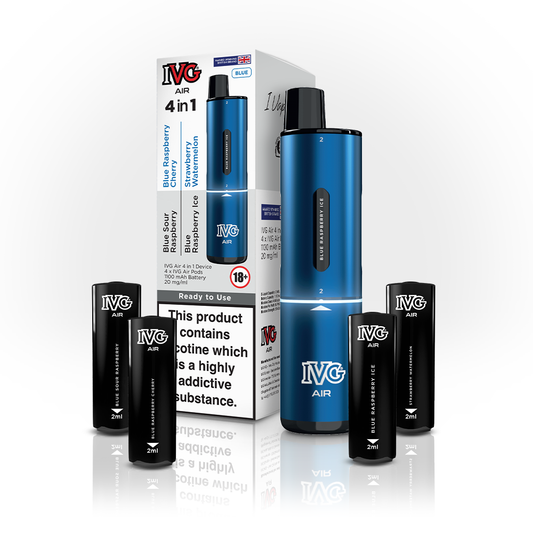
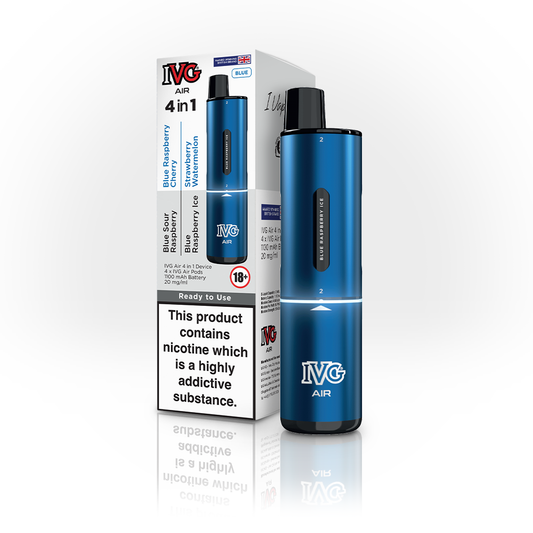
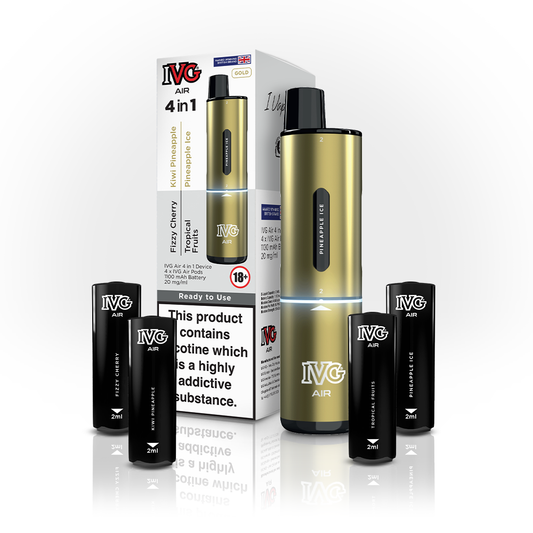
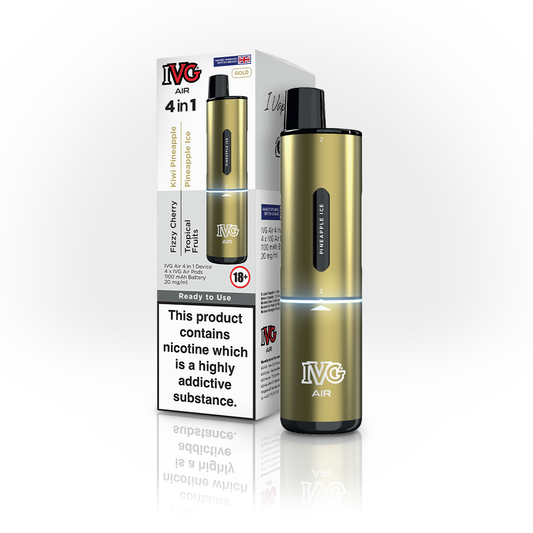
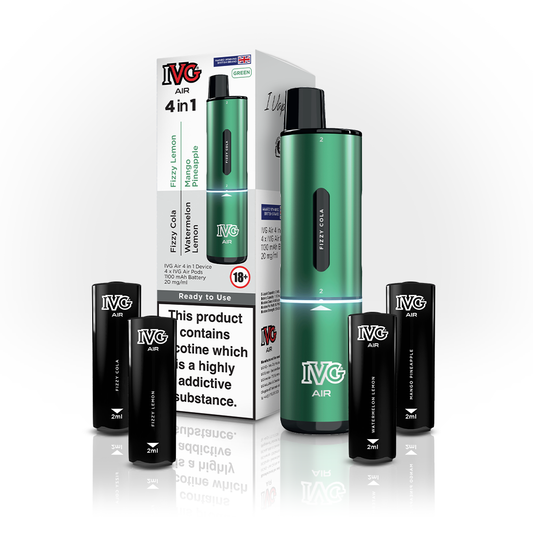
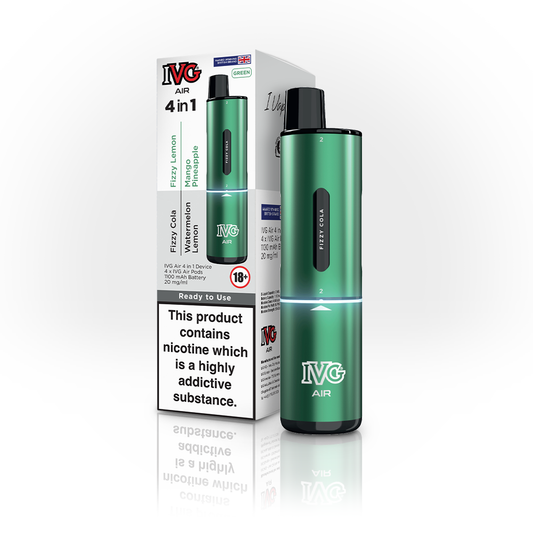






Leave a comment
Please note, comments need to be approved before they are published.